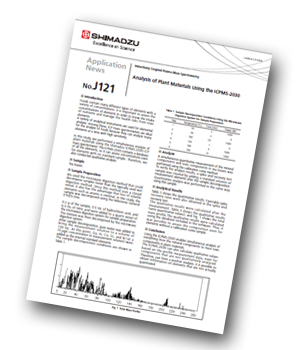Shimadzu has produced an application note describing the simultaneous analysis of plant materials using ICP-MS.
 Introduction
Introduction
Foods contain many different types of elements with a variety of concentrations. It is important to assess the concentrations of elements in order to know the intake of nutrients and manage the health risks from toxic elements. In this study, a simultaneous analysis of plant materials using the Shimadzu ICPMS-2030 ICP mass spectrometer is performed. This instrument contains a database of all the elements, so it can assess concentrations even for elements with no standard sample enabling a qualitative analysis to be conducted.
Sample Preparation
The sample was tea leaves and the microwave digestion method was used that could decompose samples faster than the typically used wet digestion method. Since this method uses a closed vessel, it also has the advantage that loss of volatile elements such as arsenic is minimal. In this study, the sample was decomposed using the Milestone General ETHOS-One.
Analysis
A simultaneous quantitative measurement of the mineral components and toxic components in tea leaves was performed using the calibration curve method. To verify the analysis results, a spike and recovery test sample was created by adding a standard solution of measurement elements after the sample decomposition. Quantitative analysis was performed in the same way using this sample.
Conclusion
Using the ICPMS-2030 enables simultaneous analysis of everything from the mineral components to trace toxic components in plant materials. The ICPMS-2030 can also calculate qualitative values
based on the profile measurement data, even for components that are not qualitatively analysed.
Therefore, just from a postrun analysis, it is possible to obtain information on elements that are not actually quantitated.




